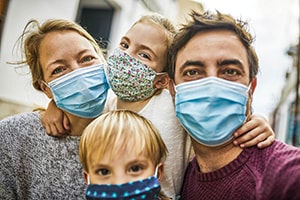
Vaccinations are a critical tool to help communities reach herd immunity and save lives.
Infectious diseases can strike at any time. Some of them cause relatively minor interruptions to daily life and often can resolve of their own accord when the body’s immune system mounts a successful defense. Other diseases can cause serious, even life-threatening symptoms or spread rapidly, which makes it essential for medical professionals to help slow down or stop the transmission.
What is herd immunity?
Herd immunity is a term that often arises in relation to infectious diseases. Herd immunity has taken on renewed significance as the world has been battling Covid-19, the novel coronavirus introduced in late 2019. Herd immunity, which is sometimes called “community immunity,” “population immunity” or “social immunity,” refers to the protection from infectious diseases that occurs when a large percentage of the population has become immune to that disease — either due to creating antibodies after an infection or after a vaccine. If enough people are resistant to the cause of a disease, whether it is a bacteria or virus, that disease has nowhere to go and the spread “stalls,” according to WebMD.
How does herd immunity occur?
There are two ways that herd immunity can occur. The first is when resistance develops naturally when the body is exposed to the virus or bacteria. At this point, the immune system will produce antibodies to fight off the infection. After recovery, these antibodies are still circulating, and should exposure to the same disease occur again, the body can defend against another infection.
Another way that herd immunity occurs is through vaccination. The Centers for Disease Control and Prevention (CDC)states that when the majority of people are vaccinated, it creates the same disease lockdown — fewer people get sick and fewer pathogens are able to spread from person to person. What’s more, even those who are not vaccinated, such as newborn babies or those who may not be able to get vaccinated due to chronic illnesses, will get some level of protection because the disease will not be spreading as readily within their communities.
When is herd immunity reached?
When enough of a population is immune to a pathogen it prevents further spread and herd immunity is apparent. Diseases are different and herd immunity is reached based on the pathogen’s reproduction number, or R0. Essentially this boils down to how contagious the pathogen in question is. WebMD says the R0 tells the average number of people that a single person with the virus can infect if those people aren’t already immune. The higher the R0, the greater number of people will need to be resistant to reach herd immunity. Measles, which is very contagious at an R0 of 12-18, requires 93-95% of the population to be immune for herd immunity to be reached. The World Health Organization estimates the R0 for Covid-19 to be between 2-4. Most health experts believe at least 70% of the population will need to be immune to halt the spread.
In the case of Covid-19, it’s still unclear whether one can get reinfected, whether antibodies produced for one strain can fend off another strain, and how long natural or vaccinated immunity will last. These mysteries is what makes herd immunity — both through a vaccine or through natural exposure — challenging for epidemiologists in relation to Covid-19.



